1. Early Life and Amateur Career
Chris Young's early life was marked by exceptional athletic talent in both basketball and baseball, which he pursued through high school and college, demonstrating prowess that attracted attention from both collegiate and professional sports.
1.1. High School
Young attended Highland Park High School in University Park, Texas, excelling in both basketball and baseball. In basketball, he lettered three times, accumulating over 1,000 points, 500 rebounds, and 200 blocks. He averaged 16 points, 12 rebounds, and 3 blocked shots per game during his high school career. As a sophomore in 1995, he was moved up to the varsity basketball team due to injuries. By his junior year, his presence was so significant that an opposing team reportedly practiced against a coach holding a broom in the air to simulate playing against him. He helped Highland Park reach the Class 4A Region II basketball final in 1997 and the Class 4A Texas state basketball final in 1998. During his senior season, his team achieved a 23-1 record, ranking first in The Dallas Morning News Class 4A area poll and the Texas Association of Basketball Coaches' state poll. Young led his team to the UIL State Tournament championship game, where they lost to Houston's Waltrip High School. He was named the District 9-4A Most Valuable Player and a first-team All-State selection by the Texas Association of Basketball Coaches.
In baseball, Young was a two-year letterman, compiling a 14-3 record with 180 strikeouts. As a junior in Spring 1997, he threw a no-hitter against McKinney High School and began the season with a 6-0 record before a stress fracture in his foot sidelined him for a significant part of the season. Despite the injury, he was considered a top professional prospect and was named to the all-district team. That summer, he played for the Dallas Mustangs, defending national champions in the Connie Mack World Series, earning a win in the fifth-place game. In his senior year (1998), he pitched two no-hitters, including one against Carthage High School. He displayed home run power, sometimes playing designated hitter. Young was the starting pitcher in the Texas state 4A championship game against Calallen High School, which Highland Park won, and he clinched the game with a successful pickoff move. He was selected to the Texas High School Baseball Coaches Association 1998 All-State baseball team and the Texas Sports Writers Association third-team Class 4A All-State baseball.
1.2. College Career
Young attended Princeton University, where he continued to excel in both baseball and basketball, becoming the Ivy League's first male two-sport Rookie of the Year, a unanimous selection for both awards. He majored in politics, demonstrating his commitment to academics alongside his athletic pursuits.
In his freshman basketball season (1998-99), Young was named second-team All-Ivy and was selected as the basketball Rookie of the Week seven times, including the final six weeks. He set Princeton Tigers men's basketball freshman records for points (387) and rebounds (160), averaging 12.9 points and 5.3 rebounds per game. He was honored as Ivy League Player of the Year and earned freshman All-America honors from Basketball Weekly. Notable performances included 39 points, 19 rebounds, and 15 assists over three games at the Rainbow Classic basketball tournament, and a season-high 24 points in a National Invitation Tournament win against the NC State Wolfpack. He concluded his college basketball career starting every game for the 1999-2000 team, recording 22 double-digit scoring games and breaking his own single-season school record for blocked shots with 87. He led the team with 13.8 points per game, 6.3 rebounds per game, 87 blocked shots, and 40 steals, and was second with 105 assists. His 6.3 rebounds per game was the highest average by a Princeton player since 1978, and he was the thirteenth player in school history to record 100 assists in a season. For his college basketball career, Young accumulated 801 points, 350 rebounds, and 142 blocks. His best game performances included a 20-point game against the 11th-ranked Kansas Jayhawks, a career-high 30 points against Harvard, and a school record of nine blocked shots against the Ohio Bobcats.
In his freshman baseball season (1999), Young led Princeton and the Ivy League with a 2.38 ERA and was twice named Ivy League Rookie of the Week. He allowed only one home run over 150 batters faced. During his sophomore baseball season in 2000, Young was the Ivy League's leading pitcher with a 1.82 ERA overall and a 1.05 ERA in conference games, compiling a perfect 5-0 record in eight appearances, with 52 strikeouts in 49 1/3 innings. He was a unanimous first-team All-Ivy League baseball selection and led the Tigers to their first Ivy League title since 1996, pitching a complete game with seven strikeouts in the championship series opener against Dartmouth. In 2000, he played collegiate summer baseball for the Chatham A's of the Cape Cod Baseball League.
Young was selected by the Pittsburgh Pirates in the third round of the June 2000 draft. He signed a 1.65 M USD contract with Pittsburgh on September 6, 2000, after receiving assurances that he could complete his collegiate education. He earned his degree in politics from Princeton in June 2002. While commuting on minor league buses as a player for the Hickory Crawdads, he completed his senior thesis, "The Impact of Jackie Robinson and the Integration of Baseball on Racial Stereotypes in America: A Quantitative Content Analysis of Stories about Race in the New York Times." In 2002, Young was also offered a two-year guaranteed contract to play basketball for the Sacramento Kings of the National Basketball Association by fellow Princeton alum and Kings president Geoff Petrie, which he ultimately declined to pursue his baseball career.
2. Professional Playing Career
Chris Young embarked on a professional baseball journey marked by several team changes, impressive performances, and a notable resilience in the face of recurring injuries, establishing himself as a significant presence on the mound.
2.1. Minor Leagues
Young began his professional career in the Pittsburgh Pirates organization after being drafted in 2000. In 2001, he posted a 5-3 record with a 4.12 ERA in 12 starts for the Class-A Hickory Crawdads in the South Atlantic League, including two complete games. In 2002, he helped the Crawdads win the league title, finishing with an 11-9 record and a 3.11 ERA in 26 starts, allowing more than three earned runs in only two starts. Opposing batters hit just .234 against him.
In December 2002, Young was traded to the Montreal Expos organization along with Jon Searles for pitcher Matt Herges. Herges was released by the Expos shortly after, making Young's trade seem initially one-sided. Young started the 2003 season on the disabled list but joined the Class-A Advanced Brevard County Manatees of the Florida State League in late April. He recorded a 5-2 record with a 1.62 ERA, holding opponents to a .150 batting average in eight starts. A highlight was an eight-inning, one-hit, no-walk, eight-strikeout performance against the Fort Myers Miracle on May 11, which capped a 3-0 start with a 0.47 ERA.
In June 2003, Young was promoted to the Double-A Harrisburg Senators of the Eastern League, where he went 4-4 with a 4.01 ERA in 15 starts. He impressed in July with a 3-0 record and a 3.03 ERA over five starts.
On April 3, 2004, the Expos traded Young to the Texas Rangers organization, along with Josh McKinley, for Einar Díaz and Justin Echols. He began the 2004 season with the Double-A Frisco RoughRiders of the Texas League, where he went 6-5 with a 4.48 ERA in 18 starts. He allowed only two home runs in his final 12 starts and 61 innings with the RoughRiders. In late July, he was promoted to the Triple-A Oklahoma RedHawks of the Pacific Coast League, going a perfect 3-0 with a 1.48 ERA in five starts. During this stint, he allowed only nine walks while striking out 34, holding opposing batters to a .189 average. He earned Pacific Coast League Pitcher of the Week for August 16-22 and took a no-hitter into the sixth inning of his second Triple-A start on August 2.
2.2. Texas Rangers (First Stint)
Young made his MLB debut with the Texas Rangers on August 24, 2004, against the Minnesota Twins. He pitched 5 2/3 innings, giving up four hits and three earned runs, striking out four and walking three. Although he exited trailing, the Rangers secured a 5-4 comeback victory. His debut made him the first Princeton baseball player to start a major league game since Dave Sisler in 1961 and the first Princetonian to appear in an MLB game since Bob Tufts in 1983. At 6 in, Young became the second-tallest player in MLB at the time, only an inch shorter than Jon Rauch, and the tallest pitcher in Rangers history. After joining the starting rotation, he made seven starts, compiling a 3-2 record with a 4.71 ERA. His first win came on September 4 against the Boston Red Sox. A September 19, 1-0 win against the Anaheim Angels marked the Rangers' first 1-0 victory since August 25, 2000, ending a streak of 669 games. The team went 5-2 in his seven starts that season. Following his debut season, Young signed a three-year contract extension through 2007.
In 2005, Young was one of three rookies on the Rangers' Opening Day roster and made 31 starts, finishing with a 12-7 record and a 4.26 ERA. His 12 victories tied Kevin Brown's record for most wins by a Rangers rookie. He had a slow start but improved to a 2.78 ERA through 11 starts from April 17 to June 13, including a 1.42 ERA in May. He was the beneficiary of the second-highest run support in the majors. Young recorded a personal-best eight strikeouts on June 2 at Detroit. He came within an inning of a shutout twice and took a no-hitter into the sixth inning on June 25 against the Houston Astros. Despite his success, he was a key part of an offseason trade that sent him, Terrmel Sledge, and Adrián González to the San Diego Padres for Adam Eaton, Akinori Otsuka, and Billy Killian.
2.3. San Diego Padres
Young's tenure with the San Diego Padres marked a significant period of his career, highlighted by an All-Star selection, multiple near no-hitters, and a series of injury battles that impacted his consistency.
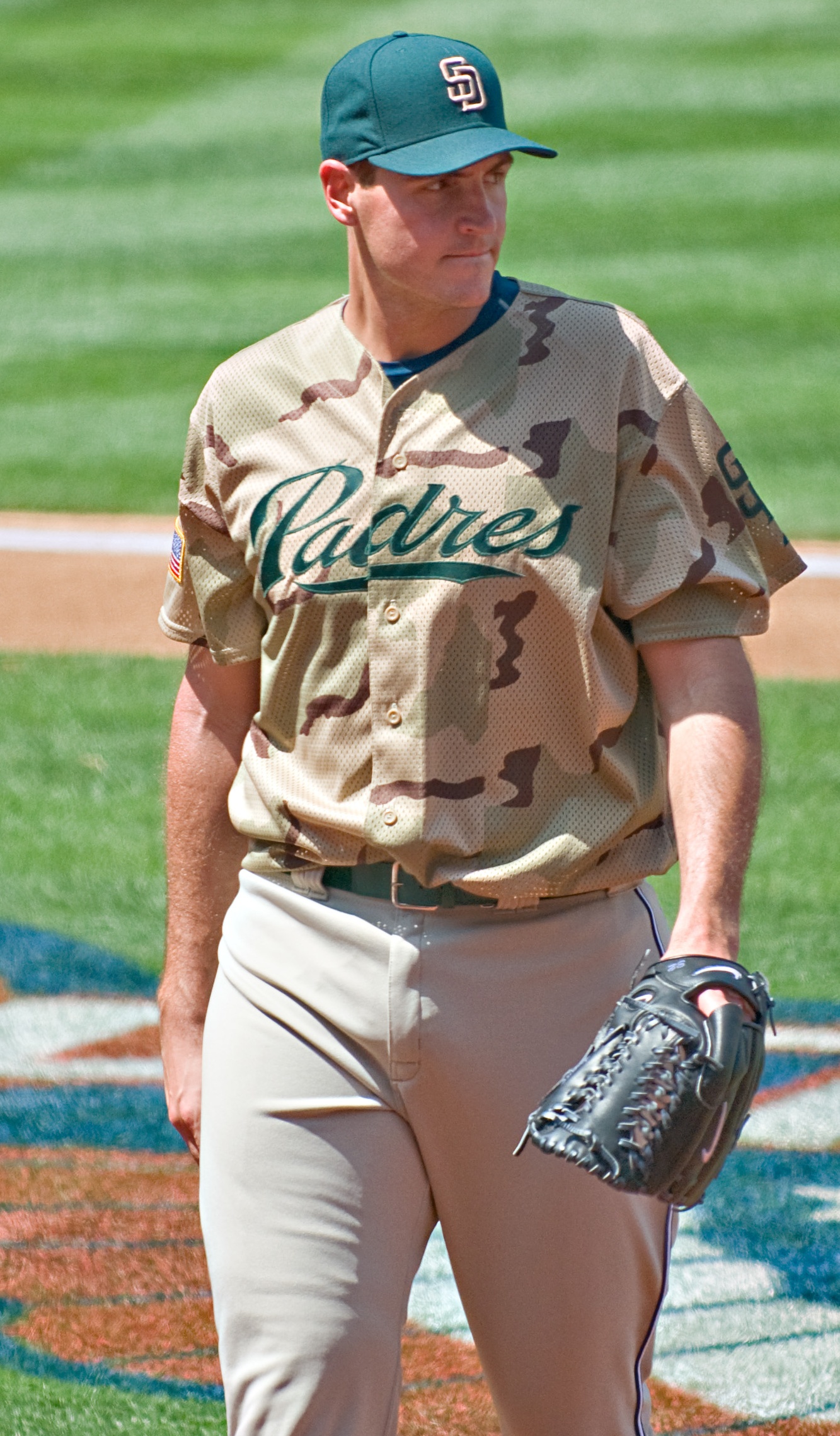
2.3.1. 2006
The 2006 season was a breakout year for Young. His ERA dropped to 3.46 over 31 starts, ranking sixth in the National League, and he recorded a career-high 169 strikeouts. He finished with an 11-5 record, led all major league pitchers with a 2.41 ERA on the road, allowed a league-leading 6.72 hits per nine innings, and held opponents to a .206 batting average. He had 15 no-decisions, the most among MLB starting pitchers that year, and allowed the most stolen bases in the majors (41). Young earned the National League Pitcher of the Month award for June, during which he maintained a 1.17 ERA and struck out 34 batters. His June performance included a career-best 12-strikeout game on June 9 against the Florida Marlins and a win against his former team, the Texas Rangers, on June 21.
Young took a no-hitter into the eighth inning or beyond three times. On May 30, he carried a no-hitter into the eighth inning against the Colorado Rockies, surrendering a double on his first pitch of the inning. On September 22, he had a no-hitter through 8 1/3 innings against the Pittsburgh Pirates before a pinch-hitter hit a two-run home run, denying him the first no-hitter in Padres history. He was on pace for a perfect game through 5 2/3 innings in that game. He also extended his undefeated road start streak to 24 games, making him one of only three pitchers in major league history to achieve at least 23 straight road starts without a loss. He ended the season by winning his first career postseason start on October 7, a 3-1 victory in Game 3 of the 2006 National League Division Series against the St. Louis Cardinals, pitching 6 2/3 shutout innings with nine strikeouts. The Padres ultimately lost the series. In November, Young participated in the Major League Baseball Japan All-Star Series and kept a blog about his experiences during the trip.
2.3.2. 2007
Young's 25-consecutive road start undefeated streak ended on April 15 at Dodger Stadium. On April 10, he signed a four-year extension with the Padres through the 2010 season, reportedly worth 14.50 M USD with a club option for 2011.
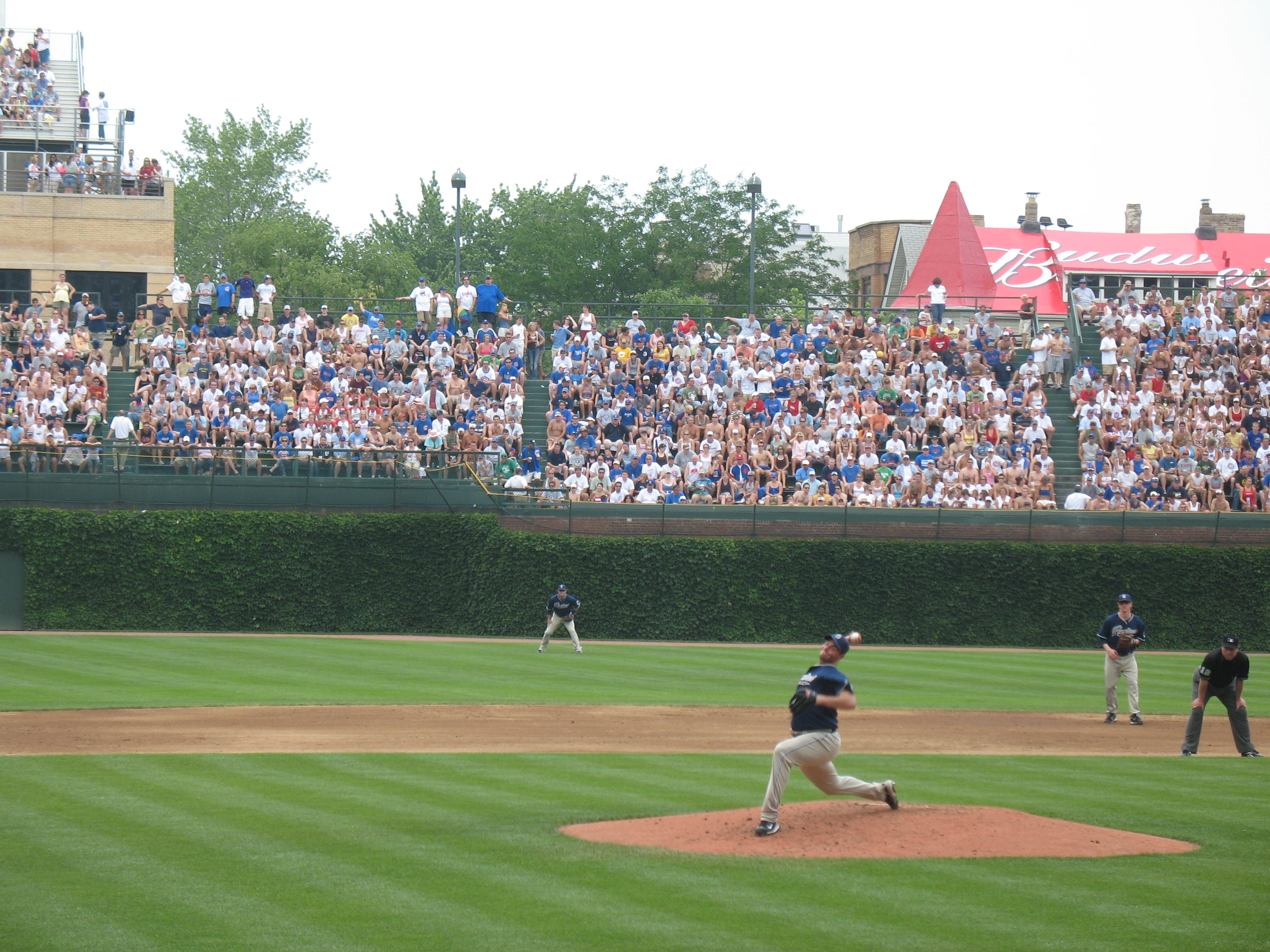
On June 16, a controversial incident occurred when Young hit Chicago Cubs first baseman Derrek Lee with a pitch on the back of his upper left arm. The benches cleared, and both Young and Lee were ejected. They were subsequently suspended for five games each, which they appealed. At the time of the altercation in the fourth inning, both pitchers were working on no-hitters. Young earned a no-decision in the game, which the Padres won 1-0.
On July 1, Young was nominated for the All-Star Final Vote. On July 4, he posted seven scoreless innings in a 1-0 victory over the Florida Marlins, which allowed him to briefly retake the National League ERA lead. The voting concluded on July 5, and Young was selected for his first career All-Star Game, becoming the sixth Ivy League athlete to be named to the All-Star team. In the All-Star Game, Young was the losing pitcher, surrendering the first inside-the-park home run in All-Star game history to Ichiro Suzuki.
Young was placed on the disabled list after straining an oblique muscle on July 24. He returned on August 9 but struggled with injuries late in the season, losing the ERA leadership to Jake Peavy. He ended the 2007 season leading the major leagues in opponent batting average and hits per nine innings, but also in stolen bases allowed (44).
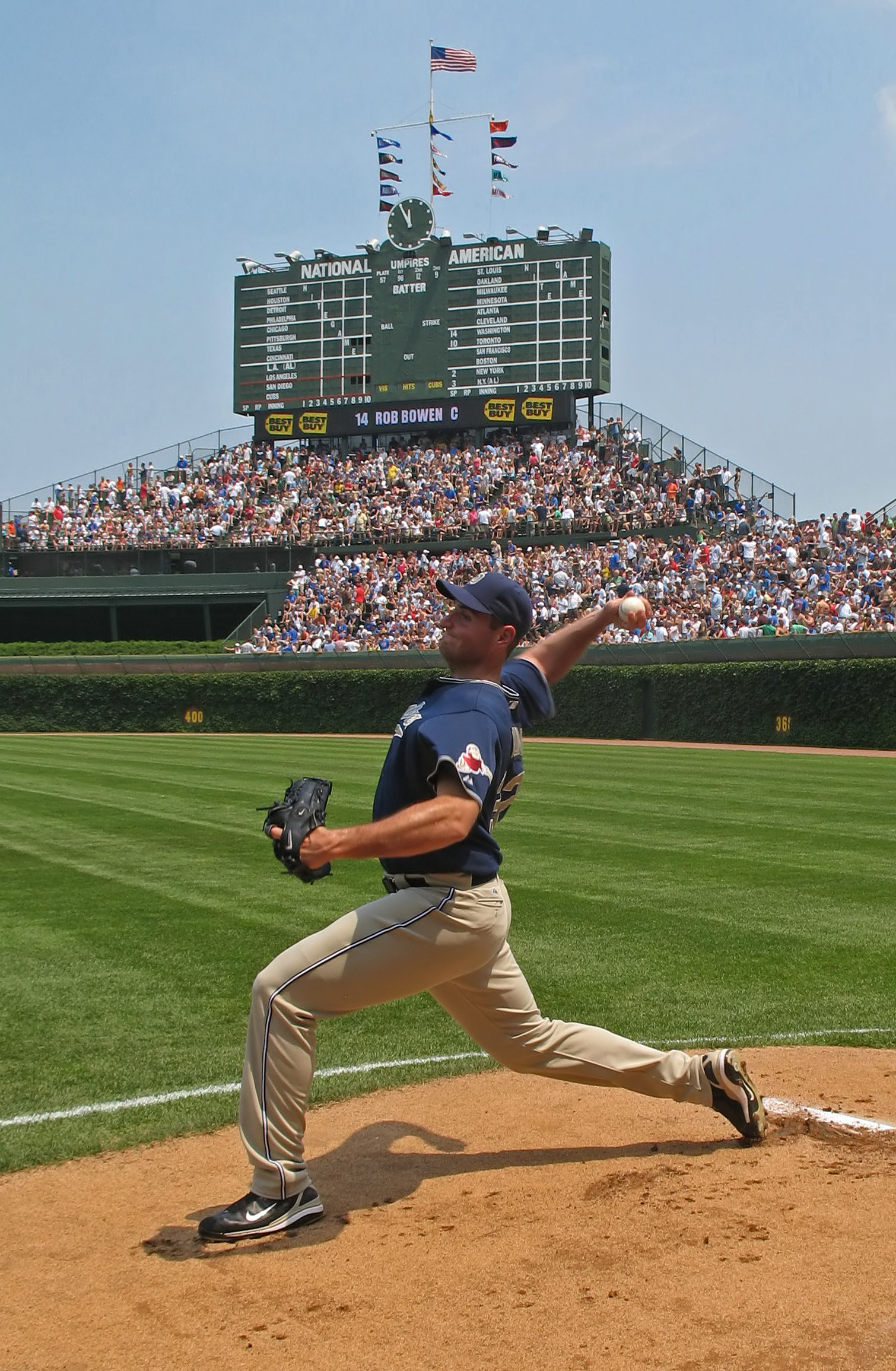
2.3.3. 2008
Young began the 2008 season in the second spot of the Padres' rotation. On May 21, in a game against the St. Louis Cardinals, Young was hit in the face by a line drive from Albert Pujols, resulting in a nasal fracture and a laceration on his nose. He returned to the mound on July 29, pitching five shutout innings against the Arizona Diamondbacks. He had another disabled list stint from August 10 to September 1. On September 7, he came within four outs of a perfect game against the Milwaukee Brewers, settling for his first career complete game (in his 114th start), allowing two hits and no walks in a 10-1 victory. Two starts later, on September 20 against the Washington Nationals, he hit his first major league home run. Overall, he made 18 starts, finishing with a 7-6 record, a 3.96 ERA, and 93 strikeouts.
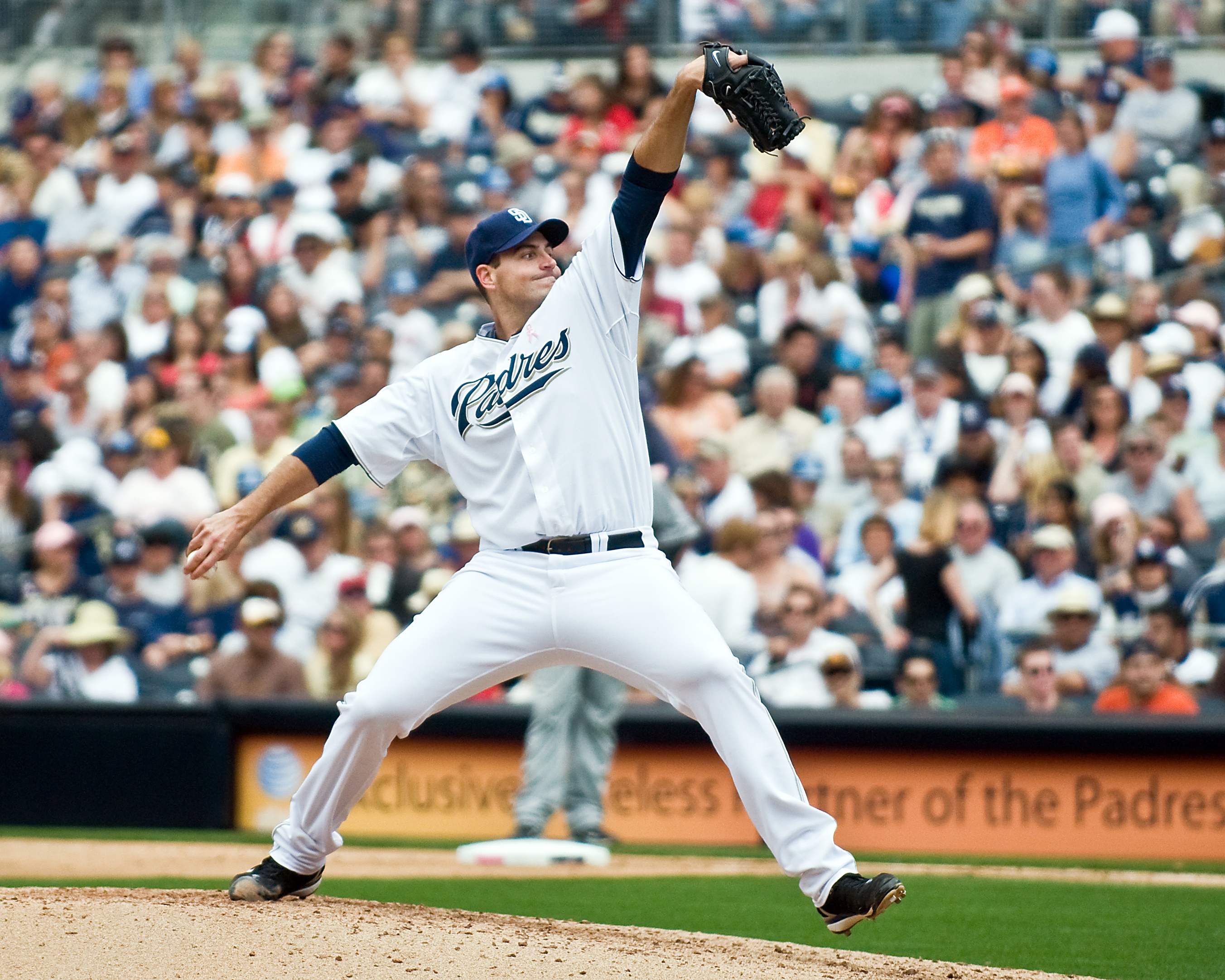
2.3.4. 2009
The 2009 season was significantly hampered by injury. After starting with a 4-2 record, Young lost his final four starts and spent the remainder of the season on the disabled list after June 14. In August, he underwent season-ending arthroscopic surgery to repair partial tears in his labrum, having previously been disabled with shoulder inflammation. He finished the season with a 4-6 record and a 5.21 ERA in 14 starts.
2.3.5. 2010
Young pitched six shutout innings in his second start of the 2010 season before being pulled with a right shoulder strain. He missed almost the entire season due to this injury, making only three starts near the end of the year. He finished with a 2-0 record and an impressive 0.90 ERA in those four appearances. In November, the Padres declined their option for his 2011 season, making him a free agent. In 2010, Sporting News recognized him as the eighth-smartest athlete in sports.
2.4. New York Mets
2.4.1. 2011
On January 17, 2011, Young signed a contract with the New York Mets worth 1.10 M USD, with the potential to reach up to 4.50 M USD through incentives. In his first career start with the Mets on April 5, 2011, Young pitched 5 1/3 innings, striking out seven batters, and earning the victory in a 7-1 Mets win over the Philadelphia Phillies. Notably, he also performed exceptionally at the plate, going three for three with two runs batted in against Phillies starter Cole Hamels, becoming the first Mets pitcher in team history to record two hits in a single inning. However, shortly after this promising start, Young sustained an arm injury that required surgery for a torn anterior capsule in his right shoulder, forcing him to miss the remainder of the 2011 season on the disabled list. He became a free agent following the season.
2.4.2. 2012
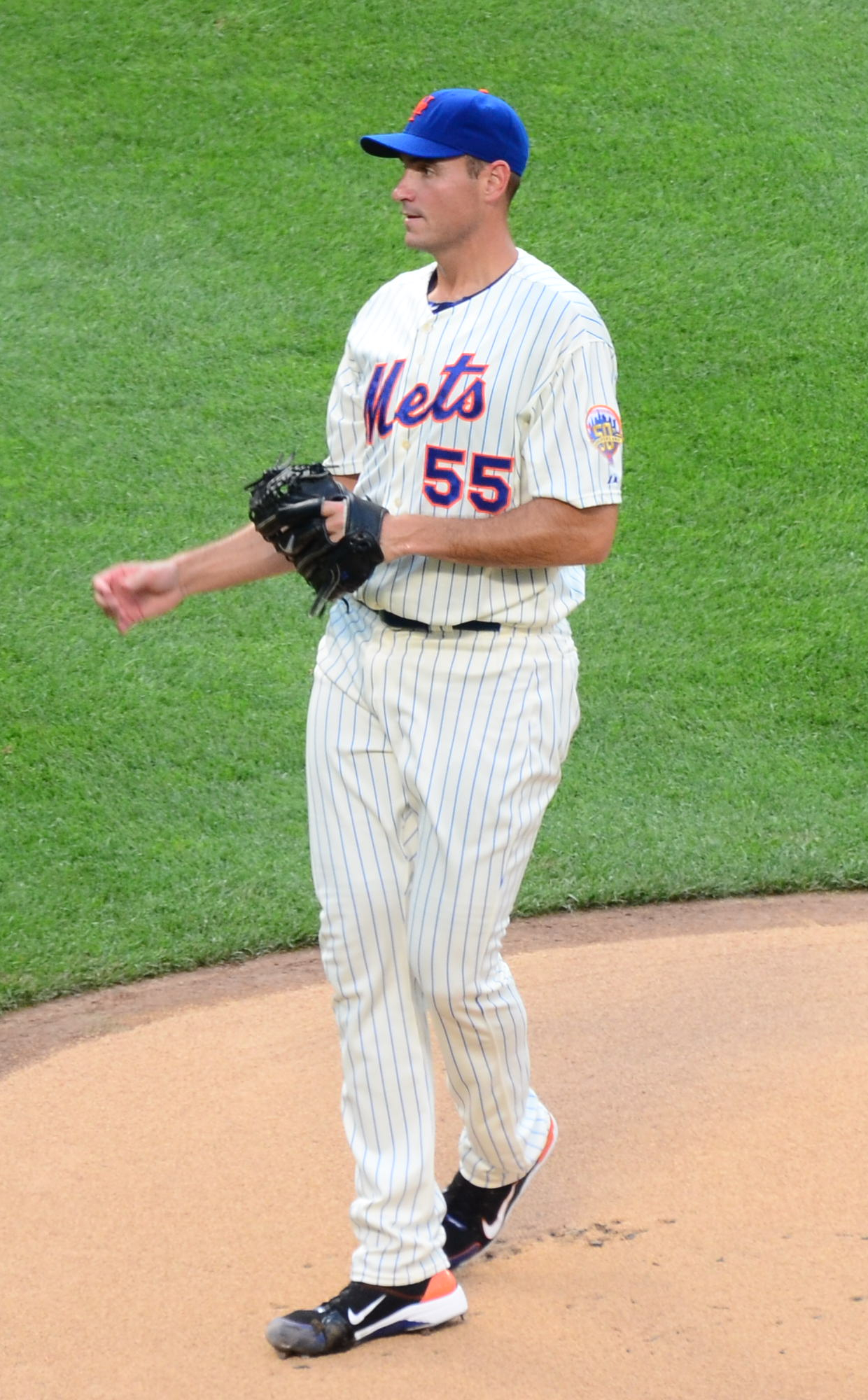
On March 26, 2012, Young re-signed with the Mets on a minor league deal, continuing his recovery from the shoulder surgery. He spent the first 33 days of the season on the Triple-A Buffalo Bisons' disabled list before being activated on May 10. He subsequently made three starts with the Single-A St. Lucie Mets before being promoted back to Buffalo on May 27, where he compiled a 1-0 record with a 3.18 ERA in 17.0 innings across three starts. On May 31, he pitched six scoreless innings for the Bisons. The Mets announced on June 4 that they would call Young up to the major league roster.
On June 5, 2012, Young made his return to the major leagues against the Washington Nationals at Nationals Park, giving up three runs (two earned) over five innings. On June 6, his wife gave birth, and he was placed on paternity leave, a move that also freed up a roster spot temporarily. Young made his next start on June 12 against the Tampa Bay Rays, earning his first win in over a year. He became a free agent following the season.
2.5. Washington Nationals
2.5.1. 2013
On February 21, 2013, Young signed a minor league deal with the Washington Nationals and received an invitation to training camp. He was granted his unconditional release on March 26 after opting out of his contract but re-signed with the Nationals on April 4, 2013. He was then assigned to Triple-A Syracuse. He made his season debut on April 23, giving up six runs in 4 2/3 innings. He made six additional starts before going on the disabled list with a neck injury on May 28, having left a start against Columbus after the first inning. He made two more starts at the end of the year in the Gulf Coast League and with Short-Season Auburn, concluding an injury-marred season with a 1-2 record and a 6.81 ERA, striking out 21 batters in 37 innings across nine total starts.
After experiencing persistent shoulder and neck pain, Young underwent surgery to repair what was diagnosed as thoracic outlet syndrome, a nerve condition that causes pressure on a pitcher's shoulder. On November 19, 2013, Young re-signed with the Nationals on another minor league deal but was released on March 25, 2014.
2.6. Seattle Mariners
2.6.1. 2014
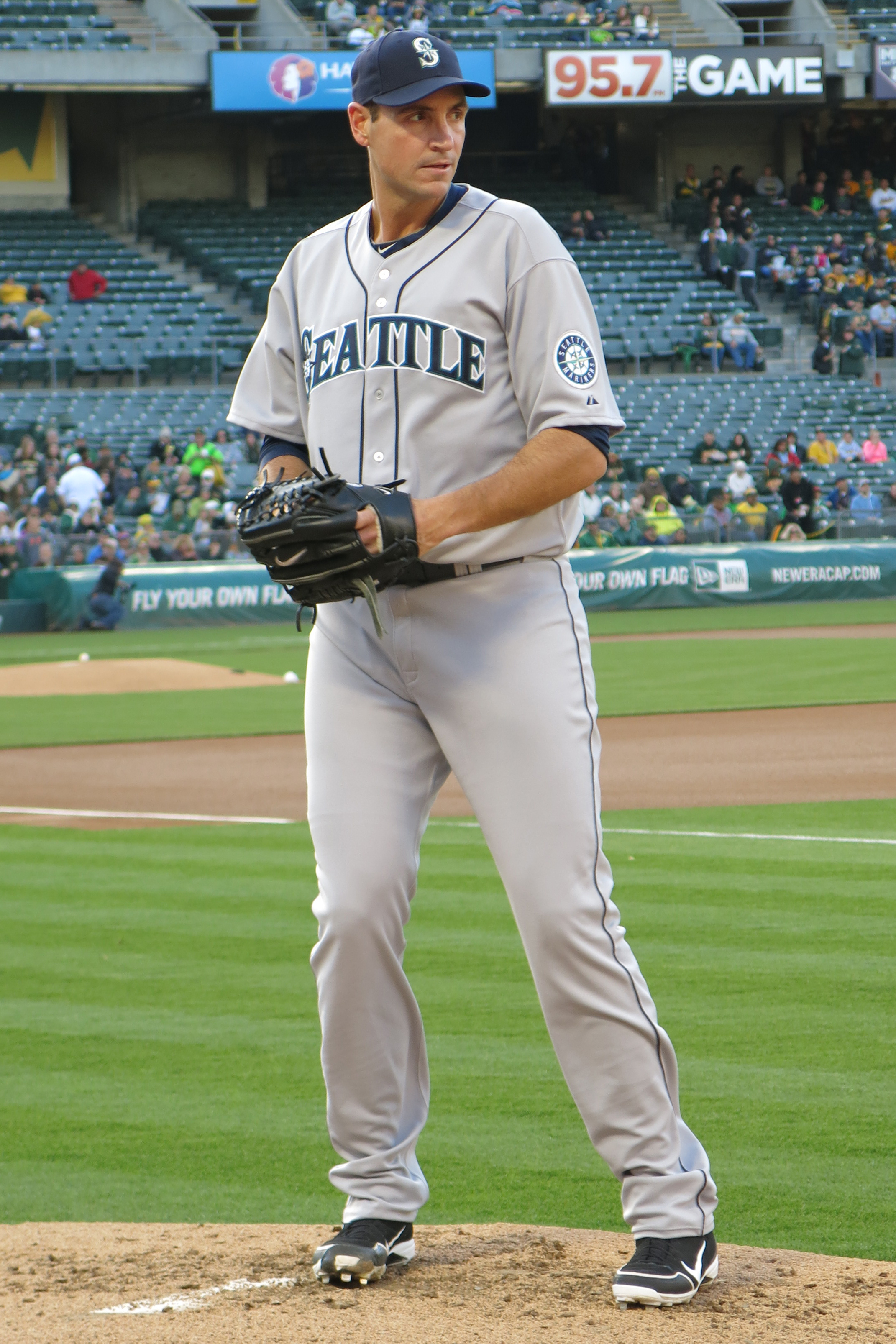
On March 27, 2014, Young signed a highly incentivized one-year deal with the Seattle Mariners. He was scheduled to debut as a starter on April 4, but the game was rained out. Consequently, on April 6, Young made his first appearance as a relief pitcher (excluding the 2007 All-Star Game), pitching two shutout innings against the Oakland A's. He made his first Major League start since September 9, 2012, on April 13 against Oakland, where he posted six scoreless innings, scattering four hits and three walks.
By early June, Young was being discussed as a candidate for the Major League Baseball Comeback Player of the Year Award, having started 5-2 with a 3.27 ERA. Mariners manager Lloyd McClendon praised him as a "godsend" for stabilizing the team's rotation amidst injuries. Young finished the season with a 12-9 record and a 3.65 ERA in 29 starts. His 7.8 hits per nine innings ranked sixth in the American League. Following the season, Young was recognized with the MLB Comeback Player of the Year Award, The Sporting News American League Comeback Player of the Year Award, and the Players Choice Comeback Player of the Year Award. He became a free agent at the conclusion of the season.
2.7. Kansas City Royals
2.7.1. 2015
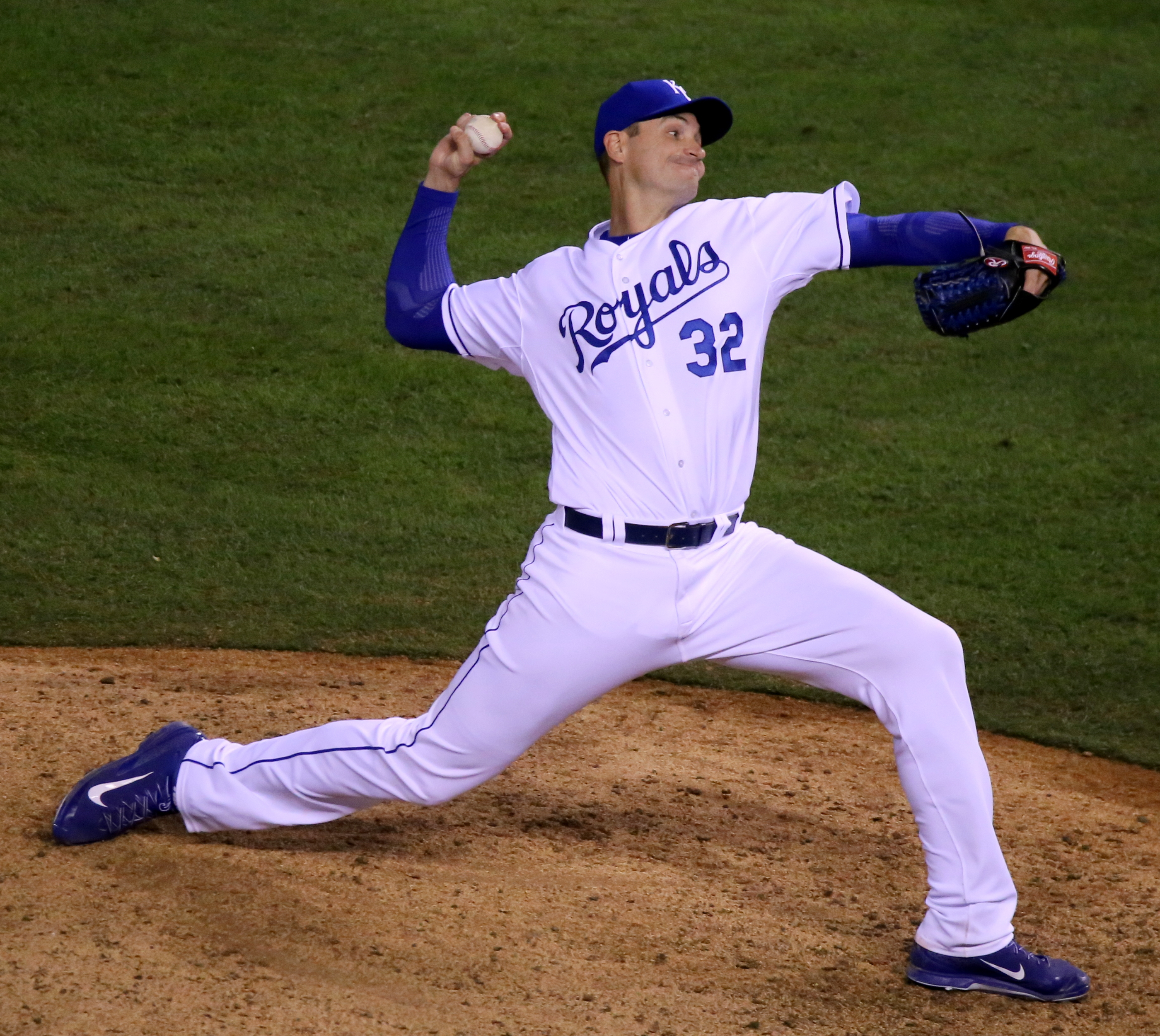
On March 7, 2015, Young signed a one-year deal with the Kansas City Royals. He began the season in a long reliever role. He appeared in the Royals' sixth game on April 12 against the Los Angeles Angels, pitching two scoreless innings as the Royals started the season 6-0. Young made his first start with the Royals on May 1, tossing five no-hit innings against the Detroit Tigers. On June 16, Young posted seven shutout innings and three runs batted in against the Milwaukee Brewers, becoming the first Royals pitcher to tally three RBI in a game since 1972.
After achieving an 8-6 record with a 3.25 ERA through July, Young was moved back to the bullpen on July 31 due to a stretch where he posted a 5.11 ERA over five games. On September 27, the day after his father died, Young made his first start since July 28 and pitched five no-hit innings against the Cleveland Indians. On October 20, Young started and pitched 4 2/3 innings in a Game 4 victory in the 2015 American League Championship Series against the Toronto Blue Jays, his first postseason start since the 2006 NLDS. He earned the win in Game 1 of the 2015 World Series on October 27, shutting down the New York Mets by giving up a walk and no hits while striking out four over the final three innings, helping the Royals win 5-4 in 14 innings.
2.7.2. 2016
On December 7, 2015, the Royals signed Young to a two-year, 11.75 M USD contract with a mutual third-year option. He began the 2016 season with a 1-5 record in seven starts and was placed on the disabled list with a strained right forearm from May 12 to 28. After his DL stint, Young served as a swingman, appearing in 34 games with 13 starts. He finished the season with a 3-9 record and a 6.19 ERA, his highest ERA over a full season at that point in his career. He also tied a career high by allowing 28 home runs and gave up a career-high 10.6 hits per nine innings. He recorded his first career save in 2016.
2.7.3. 2017
Young began the 2017 season in the bullpen after failing to secure a spot in the Kansas City rotation. On June 23, 2017, Young was designated for assignment by the Royals to make room for Neftali Feliz and was immediately released the following day. For the 2017 season, he was 0-0 with a 7.50 ERA in 14 games.
2.8. San Diego Padres (Second Stint)
On December 29, 2017, Young signed a minor league contract for a second stint with the Padres. He was released on March 31, 2018.
3. Player Profile
Chris Young's effectiveness as a pitcher stemmed from a distinctive style that defied conventional power pitching, complemented by unusual offensive contributions for a pitcher.
3.1. Pitching Style
Young was known for his unique pitching approach, often described as a control pitcher in a power pitcher's body. Despite his height of 6 in, his pitching style was compared more to Greg Maddux's than to that of a traditional power pitcher like the similarly tall Randy Johnson. He was traded multiple times partly due to the relatively low velocity of his fastball, which typically ranged from 83 mph to 87 mph (83 mph (133.6 km/h) to 87 mph (140 km/h)). Young mastered the use of precise location to make his fastball effective, often relying on deceptive late movement that made the ball appear to "jump." His pitching also induced many popups and fly ball outs, with over 50% of balls put in play against him resulting in fly balls. In 2007, his home run rate on flyballs was notably low at 3.8%, significantly below the league average of about 11%.
His mid-2000s repertoire included fastballs, curveballs, sliders, and changeups. His curveball was a slow pitch designed to keep hitters off balance against his lower-velocity fastball. Former Rangers pitching coach Orel Hershiser noted Young's ability to effectively throw his fastball to all locations and described his pitches as "sneaky fast" due to his methodical delivery and tall stature, which added deception. However, this delivery also made him susceptible to stolen bases due to the relatively long time it took for him to deliver a pitch from the stretch. By 2012, nearly all of his pitches consisted of fastballs or sliders.
3.2. Batting
As a pitcher, Young demonstrated some offensive capability, which is rare for the position. Throughout his career, he maintained a .150 batting average, accumulating 31 hits. Of these, eight were extra base hits, comprising six doubles, one triple, and one home run. He never recorded a stolen base. His major league home run in 2008 was a notable achievement, making him the first Princeton alumnus to hit a home run in MLB since Moe Berg did so in 1939.
4. Post-Playing Career
After concluding his playing career, Chris Young quickly transitioned into significant administrative roles within Major League Baseball, demonstrating his leadership and strategic understanding of the sport from a front-office perspective.
4.1. Major League Baseball Operations
Young moved into baseball administration directly after his playing career, joining the Major League Baseball front office on May 14, 2018. He was appointed as vice president of on-field operations, initiatives, and strategy, reporting directly to senior vice president of on-field operations Peter Woodfork. In February 2020, Young was promoted to senior vice president, taking over from Joe Torre as MLB's primary authority for enforcing discipline, including deciding fines and suspensions. In this role, he also oversaw the On-Field Operations and Umpiring Departments, expanding his influence over the league's competitive and operational aspects.
4.2. Texas Rangers General Manager
On December 4, 2020, Young was named general manager of the Texas Rangers, succeeding Jon Daniels. Under Young's general managership, the Rangers embarked on a rebuilding phase that transformed the team into a championship contender. This culminated in the Rangers winning their first-ever 2023 World Series championship against the Arizona Diamondbacks in five games. On September 13, 2024, in recognition of his successful leadership, Young and the Rangers agreed to a multi-year contract extension, and he was given the additional title of President of Baseball Operations, further cementing his strategic role within the organization.
5. Awards and Honors
Chris Young received numerous awards and honors throughout his career as both a player and a baseball executive:
- MLB All-Star Game selection: 2007
- National League Pitcher of the Month: June 2006
- Major League Baseball Comeback Player of the Year Award: 2014 (American League)
- The Sporting News American League Comeback Player of the Year Award: 2014
- Players Choice Comeback Player of the Year Award: 2014
Young also led the league in several statistical categories during his playing career:
- Hits per nine innings: 2006 (MLB and NL), 2007 (MLB and NL)
- Opponent batting average: 2006 (MLB and NL), 2007 (MLB and NL)
As part of the Kansas City Royals, he was a member of the 2015 World Series championship team. His leadership as general manager led the Texas Rangers to win the 2023 World Series.
6. Personal Life
Chris Young is married to Elizabeth Patrick. Elizabeth is the great-granddaughter of Lester Patrick, a legendary figure in hockey who lent his name to the National Hockey League's former Patrick Division and the Lester Patrick Trophy. Her father, Dick Patrick, is the president of the Washington Capitals and a minority owner of the team. Elizabeth is also a graduate of Princeton University, Class of 2002, and attended law school in Washington, D.C. The couple have three children together.